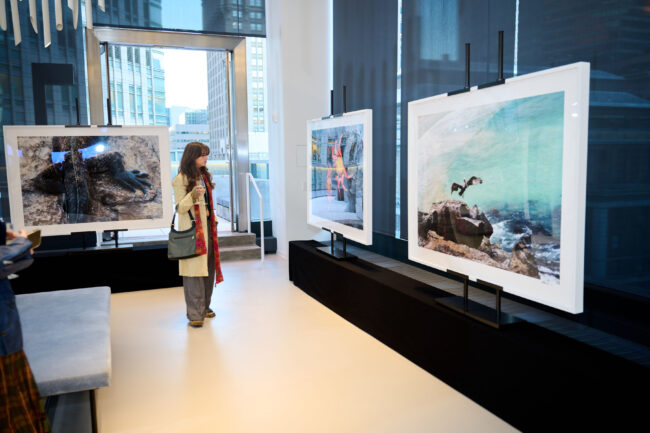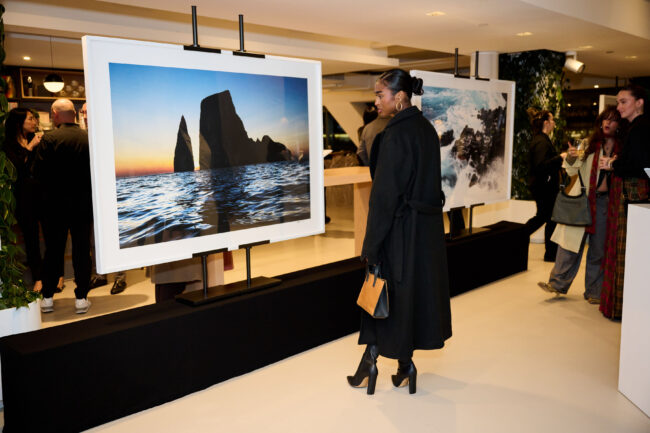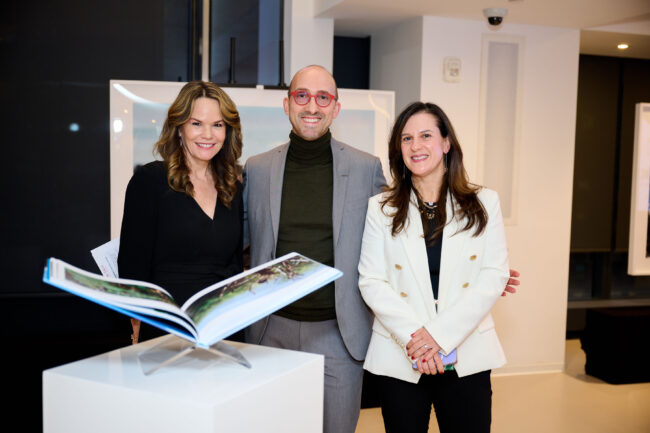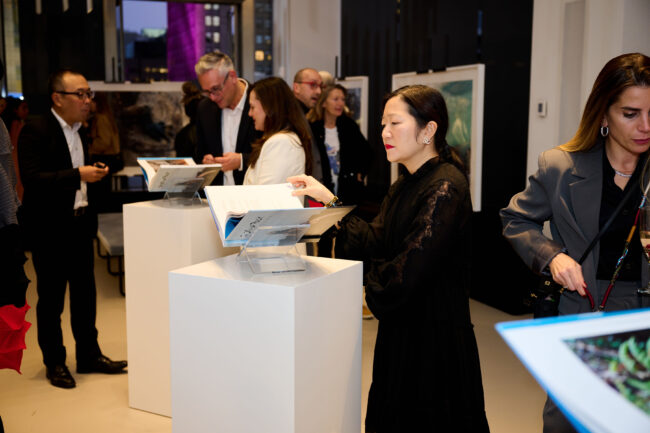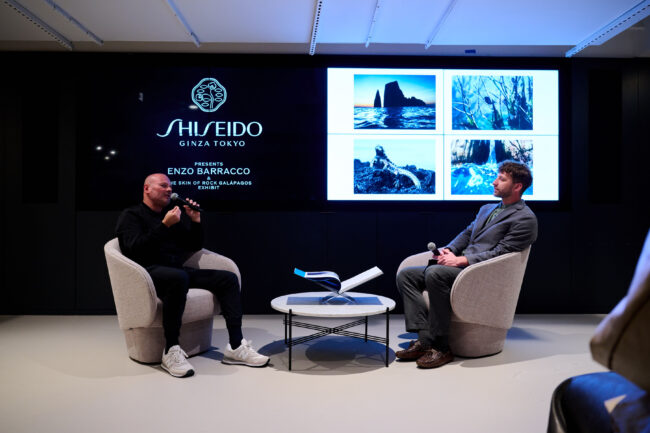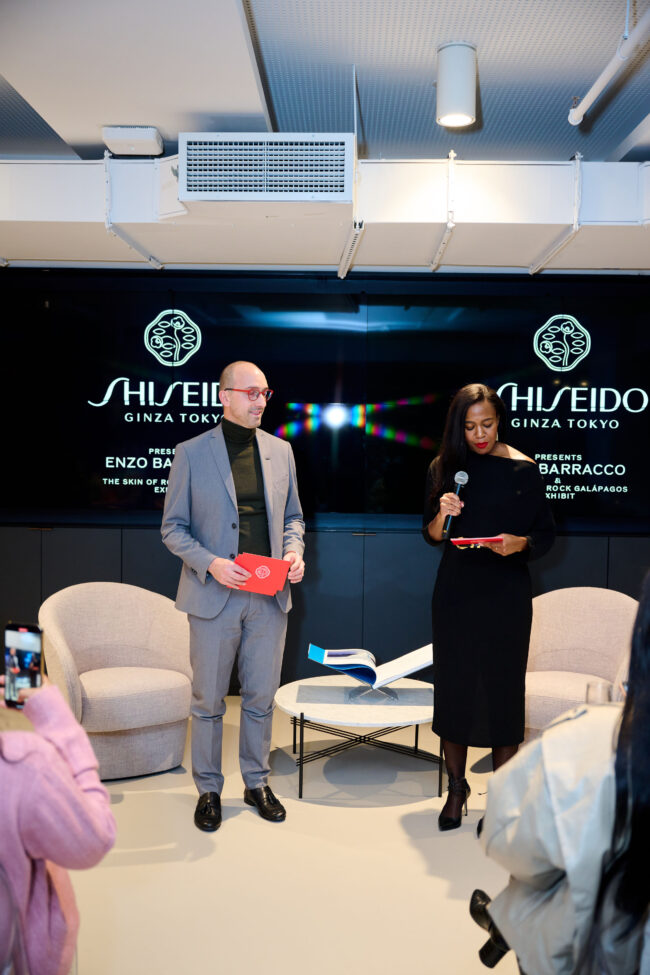Enzo Barracco’s The Skin of the Rock: Galapagos is a Reflection of Nature and Society Through Art
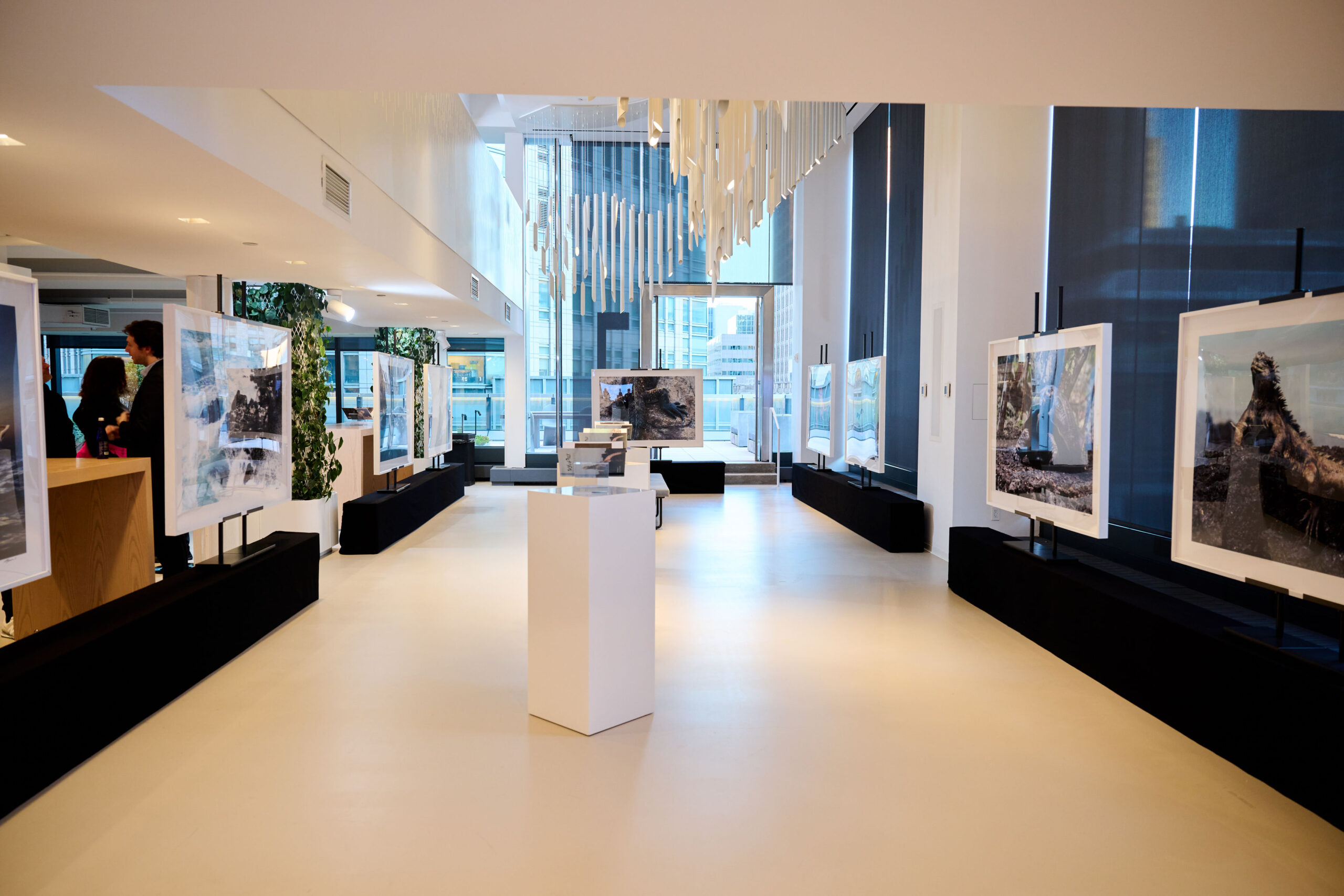
Photo: Carly Tumen Creative
Emmy-nominated photographer Enzo Barracco recently hosted an event in collaboration with Shiseido showcasing an installation for his recent project and book, The Skin of the Rock, Galapagos. For one night only, art insiders, influencers, top media outlets, and friends were invited to witness the work Enzo shot for this recent project, as well as to learn the importance and impact our modern society has on such a historic area like the Galapagos.
The Galapagos are famous for being one of the original places geologist Charles Darwin studied in his work on naturalism and how different species adapted to their environments to survive. Enzo decided to visit this same place 200 years later to understand the equilibrium of our oceanic system and how it affects and is affected by life today. However, unlike Darwin, who studied this through more of a scientific approach, Barracco decided to stick to his forte and capture his work through the lens of photography. As we all know, a picture is worth a thousand words.
The Galapagos is such a crucial area of the world to analyze, as its unique location represents the natural balance of the ocean and the world. By studying this area, we can learn more about the profound impacts our world has on nature. Disrupting this natural pattern of thousands of years can have detrimental effects not just on nature, but the rest of the world and therefore, our modern society. By having a deeper understanding of how nature operates through the study of the Galapagos, we can learn more about what we are doing right and wrong in our society and how to change our future behavior to help preserve the balance our planet had in a time before us and should have in a time long after we are gone.
D: Tell us what made you want to partner with Shiseido?
E: Shiseido was a strong interest because it is a company with a very strong interest in art and science, so it was an incredible privilege to have the opportunity to work together. I travel often in Japan, so it was really beautiful to see the incredible credibility and attention they have for the natural world and part of the ocean.
D: What image within ‘The Skin of Rock, Galapagos’ was the most challenging to capture?
E: It was definitely one of the photos you saw in the exhibition, where I found myself in the middle of the current, the very famous current coming from Antarctica to the Galapagos. There was an incredible challenge to make the focus being in the middle of the current. It’s one of the strongest currents in the world, so taking a photo was very challenging. At the same time, it was an incredible privilege to be part of the ocean and witness one of the more stronger currents in the world from a unique point. Also, I got to utilize our fragility and responsibility for the ocean.
D: What is the most impactful thing you saw while completing ‘The Skin of Rock, Galapagos’?
E: Freediving in the middle of the strong current was one of the more impactful moments of the project. I of course also got to witness the iguana marina, which influenced the name of the project, The Skin of the Rock. I remember I was taking a photo in front of a formation of lava and I realized next the lava was the iguana marina and it was so perfectly camouflaged to avoid the falcons. It’s an incredible animal that had to adapt to survive. For me, the iguana was a rock, so in the Galapagos, a rock can be an animal and an animal can be a rock. So this experience led me to create the title of the project, ‘The Skin of the Rock’.
D: What can the delicate ecosystems of The Galapagos teach us about climate change and what we are doing to our planet?
E: You know, the Galapagos is at a very interesting geographical position because it is where three major currents collide. These major currents bring new life and new species, but at the moment, they also bring plastic and microplastic, so the impact is very huge. I like the fact that we collaborate with a company like Shiseido because we start a dialogue to raise awareness about climate change and sustainability. I love the fact that more and more companies are seeing nature as an asset of the company, so they can have more interesting attention. I also like that this company has a dialogue with art. Because we know science, we know numbers, but it’s not everyday that we mention what climate change is in art.
D: Finally, in your own words, how would you describe your photography style?
E: Very honest and very connected with nature. To be honest, you need to be connected with nature. So my approach is I connect with nature with respect and I respect the timing of nature. Then what comes out is quite natural.
Written by Robby Wong
Interview by Diego Jimenez
Photography by Carly Tumen Creative




